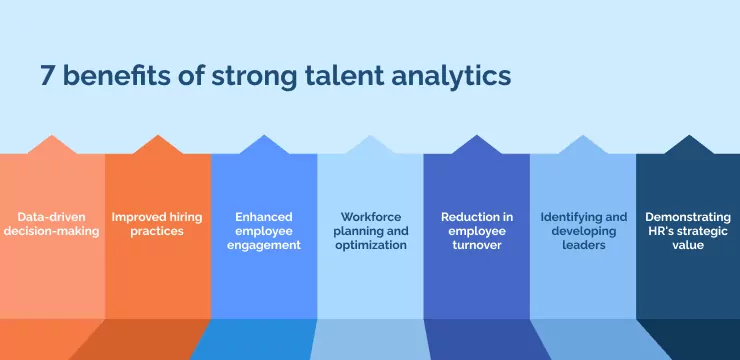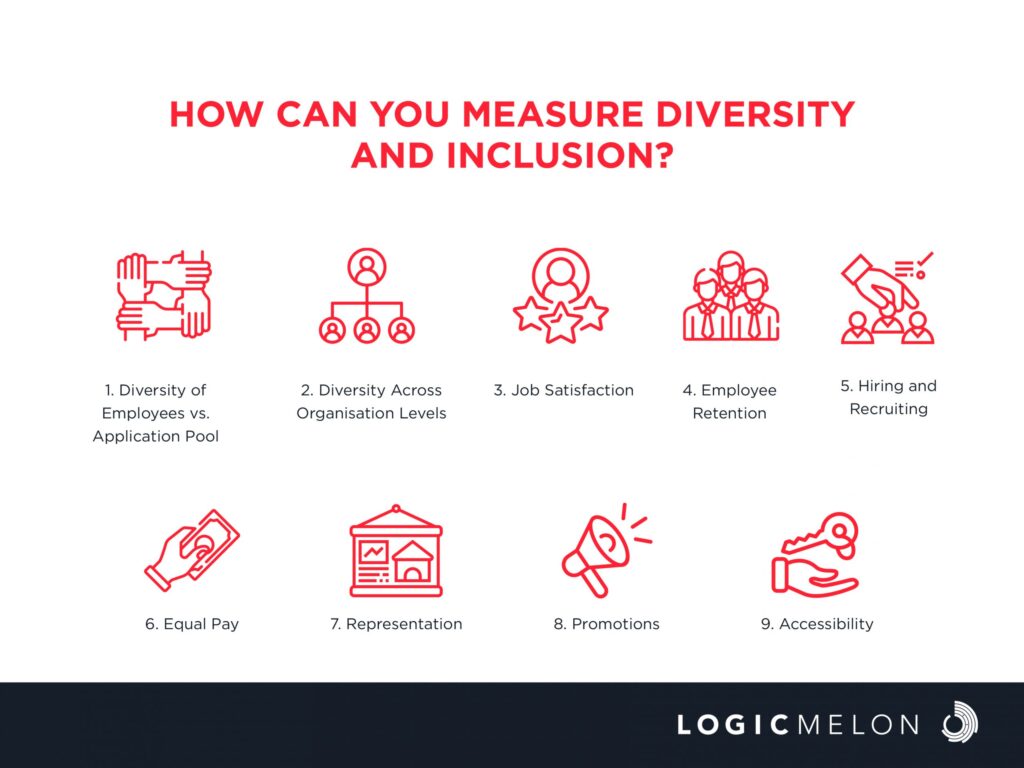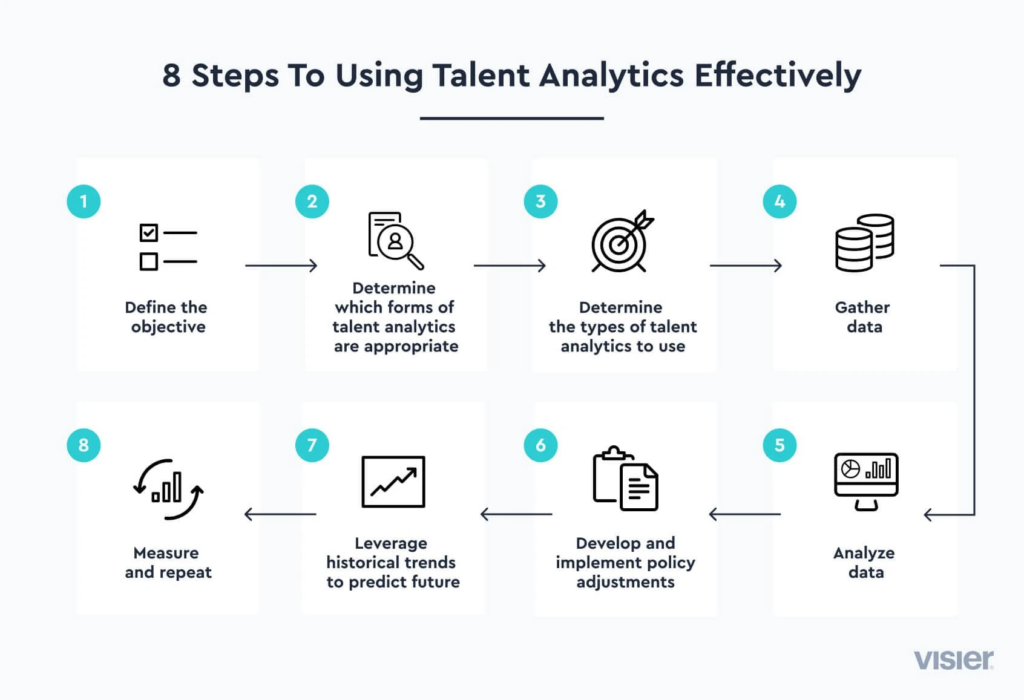What is Talent Analytics?
Talent analytics refers to the data-driven process of analyzing employee data and metrics to make informed decisions about workforce planning, talent acquisition, and employee management. It involves collecting, integrating, and analyzing various types of HR data to uncover patterns and insights that help organizations improve their talent management strategies.
With advanced statistical tools and techniques, HR departments can align their actions with business goals and objectives, thereby increasing overall efficiency and productivity. Key aspects include:
- Data Collection: Gathering relevant HR data.
- Analysis Techniques: Utilizing statistical methods.
- Strategic Decision-Making: Aligning insights with business goals.
The Importance of Talent Analytics in Workforce Management
Talent analytics serves as a critical tool in workforce management, enabling organizations to make data-driven decisions regarding hiring, training, and retaining employees. By leveraging advanced analytics, companies can gain insights into employee performance, predict future talent needs, and identify potential skill gaps.
This data-driven approach not only enhances efficiency but also supports strategic planning and fosters a proactive rather than reactive management style. Furthermore, talent analytics helps minimize biases, ensure diversity, and promote a more inclusive workplace environment, contributing to overall organizational success and sustainability.

Image Source: WalkMe
What are Talent Analytics Metrics?
Talent analytics metrics are data-driven measurements used by organizations to assess and improve various aspects of their talent management strategies. These metrics help evaluate employee performance, identify skill gaps, and optimize recruitment processes. They encompass a broad range of key performance indicators (KPIs) that include:
- Employee turnover rates
- Time to hire
- Employee engagement scores
- Training effectiveness
- Diversity and inclusion metrics
By leveraging these metrics, companies can make informed decisions, tailor their talent acquisition activities, and enhance employee retention and development, ultimately contributing to organizational success and competitiveness.
1) Employee Engagement Metrics
Employee engagement metrics offer insights into the level of commitment and enthusiasm employees have toward their work and organization. Key metrics include:
- Employee Net Promoter Score (eNPS): Measures the likelihood of employees recommending the company as a great place to work.
- Turnover Rate: Tracks the rate at which employees leave the organization, indicating overall satisfaction and retention.
- Absenteeism Rate: Monitors the frequency and duration of employee absences, reflecting their engagement and health.
- Employee Satisfaction Surveys: Collect feedback on various workplace aspects, revealing strengths and areas for improvement.
2) Attrition and Retention Rates
Monitoring attrition and retention rates provides valuable insights into an organization’s workforce stability and employee satisfaction levels. High attrition rates might indicate workplace issues such as poor management, lack of growth opportunities, or inadequate compensation. Conversely, high retention rates are often a result of effective employee engagement initiatives, competitive benefits, and a positive work culture.
Companies should track these KPIs to understand the reasons behind employee turnover and to implement strategies to enhance job satisfaction and loyalty. Analyzing this data helps in designing better HR policies and improving overall organizational performance.
3) Performance and Productivity Analysis
Analyzing performance and productivity metrics allows organizations to assess individual and team effectiveness systematically. Key metrics include:
- Key Performance Indicators (KPIs): These metrics evaluate how well employees achieve set goals.
- Efficiency Ratios: Measures like output per hour help determine workforce efficiency.
- Employee Utilization Rates: This assesses the extent to which employees are actively engaged in productive work.
- Error Rates: Low error rates indicate high performance and minimal rework.
- Project Completion Times: Timeliness of project delivery reflects organizational productivity.
4) Talent Acquisition Metrics
Talent acquisition metrics are critical for evaluating the effectiveness of recruitment strategies. Key metrics include:
- Time to Fill: Measures the period from job vacancy to offer acceptance.
- Cost per Hire: Calculates total recruiting expenses divided by the number of hires.
- Quality of Hire: Assesses new hire performance and fit within the organization.
- Source of Hire: Identifies which channels yield the most successful candidates.
- Candidate Experience: Gauges the quality of the recruitment process from a candidate’s perspective.
- Offer Acceptance Rate: Determines the percentage of accepted job offers.
These metrics help HR departments and hiring managers fine-tune their approaches to attract top talent efficiently and cost-effectively.
5) Diversity and Inclusion Metrics
Diversity and inclusion metrics are critical for understanding an organization’s demographic landscape and fostering an equitable workplace. These metrics track various factors such as gender, race, age, and disability status among employees. Key metrics include:
- Representation: Percentage of diverse individuals in different roles and levels.
- Retention Rates: Comparison of turnover rates between diverse and non-diverse groups.
- Promotion Rates: Analysis of advancement opportunities for underrepresented groups.
- Employee Satisfaction Surveys: Gauge inclusivity through feedback on company culture and policies.
Effective tracking can highlight areas needing improvement and promote strategic initiatives for an inclusive environment.

Image Source: Logic Melon
5) Training and Development Impact
Training and development impact is a crucial metric in talent analytics, assessing the effectiveness of training programs. The metric evaluates several factors:
- Employee performance improvement: Measures post-training performance gains.
- Skill acquisition and retention: Monitors new skill adoption and long-term retention.
- Engagement levels: Assesses employee engagement with training initiatives.
- Return on Investment (ROI): Analyzes the financial benefits relative to the training costs.
By understanding these aspects, organizations can optimize training programs, ensuring they meet organizational needs and support employee growth. This metric helps in identifying skill gaps and tailoring future training endeavors for enhanced productivity and reduced turnover.
6) Time-to-Hire
Time-to-hire measures the duration between a candidate applying for a position and their acceptance of an offer. This metric is crucial in assessing the efficiency of the recruitment process. Companies strive to minimize time-to-hire to secure top talent quickly, as delays can lead to losing high-quality candidates to competitors.
Shorter time-to-hire can also indicate a streamlined recruitment process and effective communication between hiring managers and applicants. Lengthy time-to-hire periods may signal bottlenecks or inefficiencies that need addressing within the recruitment pipeline. Employers should regularly analyze and optimize their time-to-hire to maintain a competitive edge.
Implementing Talent Analytics: Practical Tips and Best Practices

Image Source: Visier
- Define Clear Objectives: Start by setting clear goals for what your organization wants to achieve with talent analytics, ensuring these objectives are directly aligned with broader business goals to maximize the impact of your analytics efforts.
- Ensure Data Quality: Maintain high standards for data accuracy and completeness by regularly validating and updating your data sets, as this forms the foundation for reliable analytics and informed decision-making.
- Leverage Technology: Invest in advanced analytics tools and platforms, along with data visualization software, to enhance your ability to analyze complex data and present insights in a comprehensible way.
- Collaborate Across Departments: Encourage strong communication between HR, IT, and other relevant departments, and consider forming cross-functional analytics groups to ensure diverse perspectives and expertise are integrated into the analytics process.
- Focus on Key Metrics: Identify and prioritize key metrics that offer actionable insights, and regularly review and adjust these metrics to ensure they remain relevant and aligned with your organization’s objectives.
- Provide Training: Offer comprehensive training programs to help staff understand and effectively use analytics tools, fostering a culture of continuous learning and development to keep pace with evolving technology and methods.
- Measure Impact: Consistently track the outcomes of your analytics initiatives to ensure they are delivering measurable improvements, and use these results to refine your approach and drive ongoing success.
Conclusion
Incorporating advanced talent analytics metrics is paramount for organizations aiming to optimize their recruitment strategies and workforce planning. Leveraging these insights can lead to more informed decision-making, reduced turnover rates, and improved employee satisfaction.
To stay ahead in the competitive market, consider utilizing JobsPikr, a cutting-edge talent intelligence platform that seamlessly integrates with your existing HR systems.
Sign up today to empower your HR team with JobsPikr to confidently navigate the evolving landscape of recruitment and talent management.



